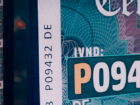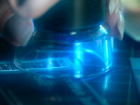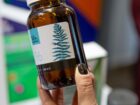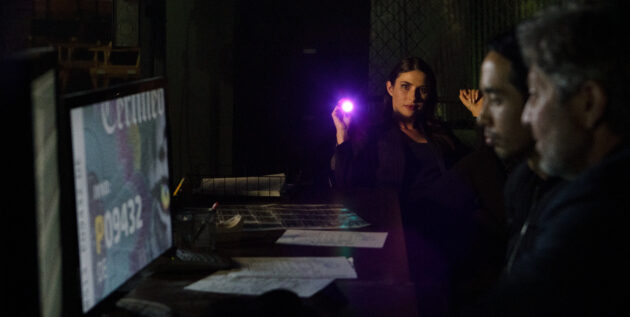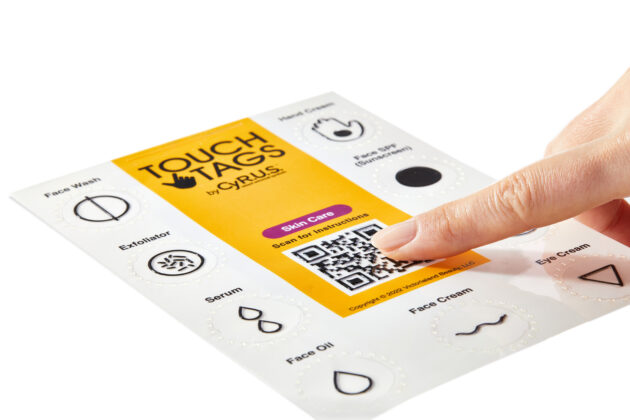
Features
Digital Finishing
Safe, secure and universal
Functional embellishments are making products safer and more accessible
May 5, 2023 By Treena Hein
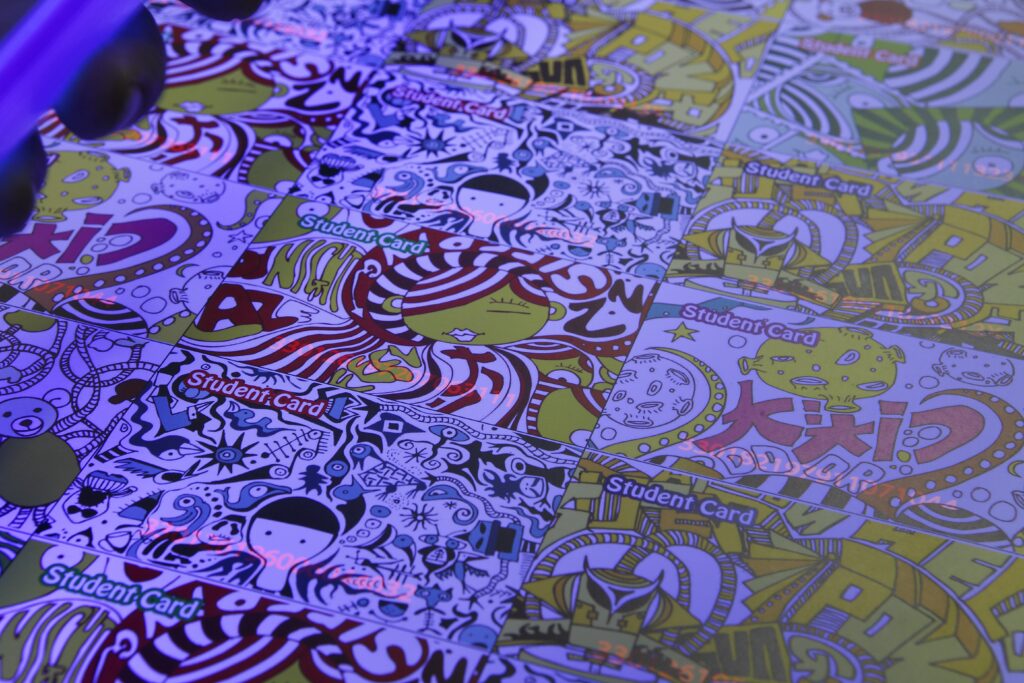 Functional embellishments are making products safer and more universally accessible. Photos courtesy HP
Functional embellishments are making products safer and more universally accessible. Photos courtesy HP Functional embellishments are “a big game changer,” according to Kevin Abergel, founder of Florida-based digital embellishment marketing company Taktiful. He believes ‘functional’ is the next logical place for print.
Tamir Hativa, head of Indigo Secure at HP, points to a Smithers report that found the global market value for security printing is expected to hit US$36 billion this year, up from US$29 billion in 2019.
According to Smithers, the conflict in Ukraine, the energy crisis and high inflation have contributed to a weakening of the global economy and disruption of supply chains. Opportunities to trade in fake goods are being exploited by criminal organizations. The rise of influencer marketing has been accompanied by an increase in counterfeit goods.
“The industry is diversifying to incorporate an ever-wider range of features to serve the needs of different actors and accommodate diverse use cases,” Hativa says.
One of the main applications of security printing is advanced brand protection by using various print features to demonstrate the authenticity of a product. This also helps keep low-quality or even potentially dangerous, counterfeit goods out of the supply chain, explains Hativa.
Additionally, various security print features on the forms and other documents used by governments, regulators and other bodies are already widely used in some instances for proper document authentication and tracking.
HP Indigo digital printers offer overt security features, such as holograms and colour-shift inks; semi-covert ones like QR codes or microtext to be authenticated with another device; covert features such as invisible inks, which are authenticated by experts or purpose-built devices; and forensic-level features that are detectable only in a lab and authenticated purely by expert inspectors.
Even a decorative foil on its own can inherently offer a low-level security feature in some applications, explains Jeff Peterson, executive director of Foil & Specialty Effects Association (FSEA). For example, a plainly printed item such as an event ticket can easily be copied and printed illegally, but you can’t print one with a decorative foil.
Peterson credits digital inkjet embellishment tech for increasing the use of functional embellishments. The technology has made it easier to put raised features on various types of packaging and/or labels.
He adds, “Some digital printer companies are now offering a fifth colour on their new models, which allows you to use a metallic or iridescent ink to add a security feature or other types of applications.”
Accessibility
Beyond security, another huge area for functional embellishments is accessibility. At the forefront of this is CyR.U.S. Raised Universal Symbols, the first, and only, modern tactile language designed to give the over 2.2 billion people in the world with some or total vision loss more independence, safety, and enjoyment of life.
This spring, the company’s Touch Tags, product labelling sheets, will hit the market. Once applied to skin care, self-care and common household products, they enable people with vision loss to quickly identify the item. The visually impaired, explains CyR.U.S. founder and chief visionary officer Victoria Watts, includes those born with impairment, those who have lost vision for any reason, and also the growing number of seniors who progressively lose some vision as they age. She also points out that even those who take their contacts out or remove their glasses to shower would find Touch Tags reassuring.
Idea origin
Watts got the idea for Touch Tags about six years ago, when her fourth child, Cyrus, was born blind.
“It was my introduction to the challenges people with vision impairment face every day,” she says. “It was right in front of me, with my baby, and I started thinking about how he would navigate life once he was older. I realized one night when I was giving him a bath that he wouldn’t ever be able to tell the difference between products without something to aid him. It was terrifying for me to realize he wouldn’t even be able to take a shower by himself without help, if nothing changed.”
Once she started researching, she noted a few companies were using Braille on their packaging, but this wasn’t a good solution. Less than 10 per cent of the visually impaired read Braille (due to the assistive technology now available, and other reasons). Additionally, Braille takes up quite a bit of room on packaging.
Watts did further investigation with the help of the Lighthouse Organization of Collier County for the visually impaired. She realized a raised universal symbol system was needed. She created the CyR.U.S. System and launched as a proof of concept in 2020.
However, in talks with many self-care product manufacturers, she came up against the same barrier each time: the cost of putting these raised symbols on products.
“Everyone thought the idea was great, but the cost was too much,” says Watts. “About a year ago, I realized I could make symbol labels directly available to those who need them. I looked at digital printing, and saw that using the Scodix method, I could produce ‘Touch Tag’ sheets.”
Each sheet comes with raised (durable, waterproof) symbol product labels, but also several other features to aid the visually impaired. These are the result of feedback Watts gathered from a dozen focus groups across the full range of visual impairment over the last six months. Each label has a raised edge so that it’s easy to find and peel off the sheet. There’s a QR code in the centre that leads to audible directions for use and descriptions of the symbols. There’s also a raised line at the top of the sheet to show which end is up.
“Those with more severe or total visual impairment still need a person to help them apply the decals, but this is a huge step in the right direction to give people the independence that we all deserve,” says Watts. “There are so many barriers to independence for those with disabilities in our society and I am hopeful this universal language that I’ve created can break down some of them. I believe that if the world becomes accessible, anyone can do anything. Universal accessibility design improves everyone’s lives.”
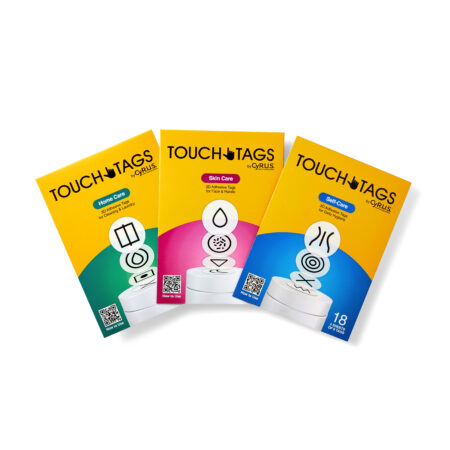
CyR.U.S. Raised Universal Symbols’ Touch Tags are labelling sheets that make products more accessible to the visually impaired. Photo © CyR.U.S.
Roll out
Returning to Touch Tags, Watts notes that over the next 30 years, 55 per cent of the global population will experience some level of vision loss because of natural ageing. She adds CyR.U.S is a universal language that will work in all countries. Consumers can buy Touch Tags directly from the website.
“It feels good to be this far,” she says. “It’s the hardest thing I’ve ever done but the most fulfilling, to make the world better, break down barriers for my son and the visually impaired community. We are about to reach consumers directly with an affordable product that will improve their quality of life. Most of us will have vision loss at some point in our lives and we should work toward a world where we can all be independent, safe and enjoy life as much as possible. I want to have CyR.U.S eventually across all product categories, and we will improve what we offer as printing technology advances.”
An edited version of this article originally appeared in the March/April 2023 issue of PrintAction.
Print this page
